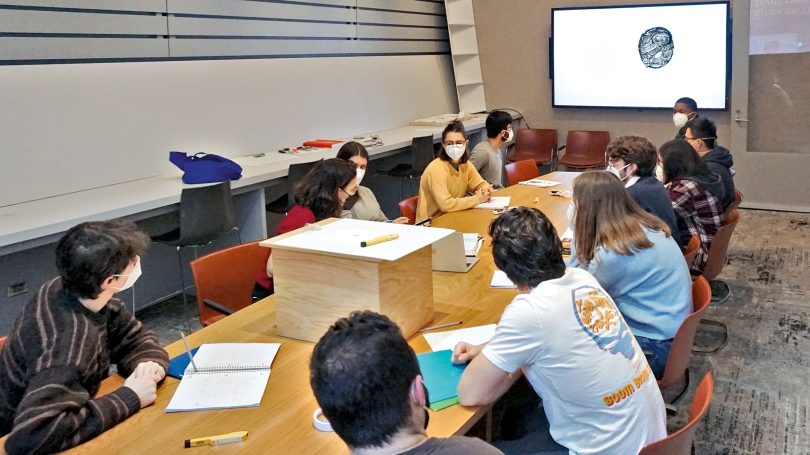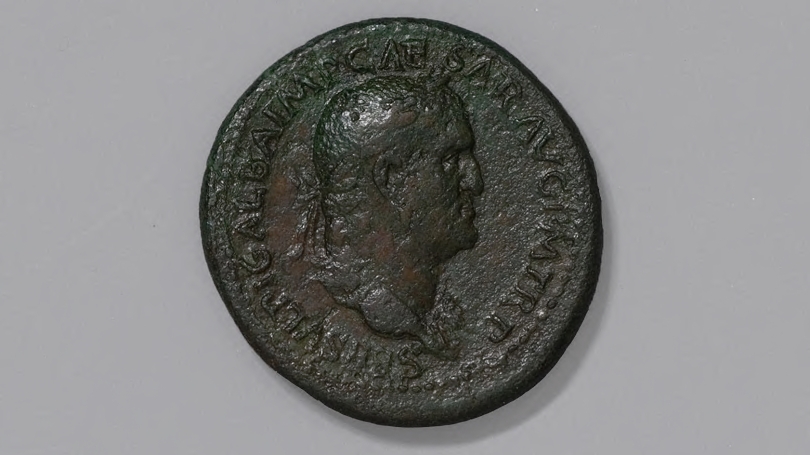Coins in the Museum
RANDALL KUHLMAN, Center for Object Study Attendant and Scheduling Assistant
Hood Quarterly, spring 2022
This winter, the Hood Museum of Art collaborated on a special gallery installation with the Dartmouth Classics/History course Before Billboards and Twitter: Roman Coins as Text, taught by Professor Roberta Stewart and described in the course catalogue as follows: "Nowhere else in the ancient world can we watch a discourse so systematically and comprehensively as we can on coins. Moreover, coins often bring forward communities and persons otherwise unrecorded in other ancient sources, allowing us to nuance the political narratives of the literary sources in terms of local traditions or individual identity (gender, ethnicity, religion)."
The class was held in the Bernstein Center for Object Study over winter term, giving students the opportunity to closely study coins from the museum's collection at every session. As a culminating experience, students researched and wrote about coins that were installed in the museum this spring. Kylie Romeros '22, a Conroy Intern and member of the class, spoke about what she learned: "I've always been fascinated with museums, but now I truly understand how unique they are in their responsibility to provide objects with context. A lot of work goes into making sure that everyone can view a coin and take away some meaning from it that extends beyond a purely material understanding."
In sharing our ancient Mediterranean coinage publicly through this exhibition, we hope to teach our audiences how a numismatist might view coins and use them to study history. The exhibition also includes example of coins and currency from different times and regions throughout the world, asking visitors to consider how currency is defined and what money actually is. The exhibition aims to offer the viewer a fresh perspective on something as seemingly familiar as money.
The students' research on objects of their choosing adds to the Hood Museum's scholarly archive and provides new narratives and deeper insights into the collection for our public audiences. This extended content is available through a website that allows visitors to explore thoughts and ideas beyond the space constraints of a gallery label. The website also expands our audiences by sharing the exhibition content virtually. As the museum navigates remote learning and virtual exhibitions, these collaborative offerings help us to bring together students, faculty, and audiences in new and exciting ways. You can see the coin exhibition (Money Talks) in the Kim Gallery on the first floor.


